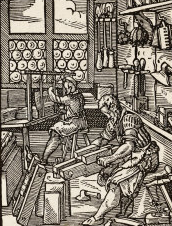Beyond Pluto's Cave: Visibility and Visuality in Alice Munro's "Images"
Abstract
Alice Munro’s short stories rarely start from a preconceived idea or plan, but more frequently from a striking image leading to a “queer bright moment,” in the oxymoronic phrase she coined to capture the visual warp out of which her stories proceed. “Images” contains several unsettling insights which the child-focalizer registers and the grown-up narrator re-envisions as moments of writerly inception. It is the generative propensity of the image, the image as primer, that I propose to analyze in this essay, starting from the distinction art historian Georges Didi-Huberman introduced between the visible and the visual in his ground-breaking essay Devant l’image: question posée aux fins d’une histoire de l’art. Pleading for a reopening of the case of the image after the pronouncements of art history had seemingly sealed it, Didi-Huberman wields concepts such as the splitting of the image that are clearly indebted to the Lacanian analysis of the scission between the eye and the gaze, a caesura to which Didi-Huberman will return in a subsequent essay, Ce que nous voyons, ce qui nous regarde. My contention in this essay is that “Images” is informed by the aporetic tension between visibility and visuality, savoir sans voir ou voir sans savoir. Between the signs the image represents and the symptoms it presents lies a narrow unscripted space which writing may invest and start from.
Published
Issue
Section
License
- Work submitted for publication must be original, previously unpublished, and not under consideration for publication elsewhere. If previously published figures, tables, or parts of text are to be included, the copyright-holder's permission must have been obtained prior to submission.
- Authors of accepted manuscripts will assign to L'Atelier the right to electronically distribute their article, or publish it in any form (Internet, CD ROM, printed copy) but authors will retain copyright and, after the article has appeared in L'Atelier, authors may republish their text (in print and/or electronic form) as long as they clearly acknowledge L'Atelier as the original publisher.


